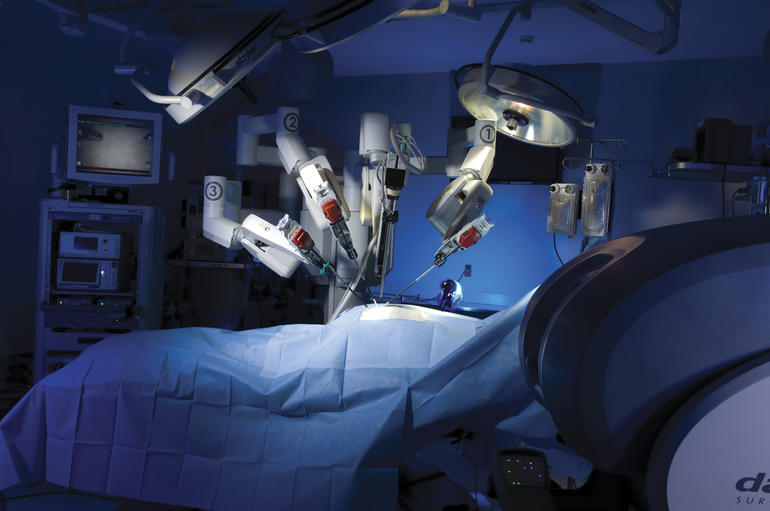In recent years many common surgical procedures have been transformed by the introduction of minimally invasive, laparoscopic, techniques. The need for general anesthesia and the recovery times required have both been significantly reduced, and these surgeries also involve much less trauma and scarring to surrounding tissue.
Robotic surgery is the most advanced application of laparoscopic principles to date, and has been approved by the FDA for use in more than 50 procedures. The Maimonides Medical Center is a top ranking health center in Brooklyn which uses the state of the art da Vinci system for a wide range of such surgeries including colorectal, urological and gynecological procedures.
Both surgeons and patients benefit from this technology, but it’s important to understand that the robot is an aid to, and not a replacement for the skills of the surgeon.
Advantages for Surgeons
During a robotic procedure the patient will be cared for by a complete team as they would be during a conventional surgery, but the surgeon is comfortably seated at a control console a short distance from the patient.
After small incisions are made, a robotic camera is inserted, along with two further arms which act as the surgeon’s hands. A fourth arm may also be used if necessary to remove any obstructions.
The camera provides the surgeon with a high definition 3-D image of the work area while he directs the robot’s “hands” through a device connecting them with his own. The flexible movement of the camera allows the surgeon a clear view of areas which he could not see with his own eye. The advantage of the robot arms and hands is that they remove any minor tremors in the human hands and also allow surgeons a greater range and precision of movement which is particularly helpful in the safe performance of especially delicate operations.
Benefits for Patients
These advantages for surgeons are of course in themselves beneficial for patients, but robotic surgery also offers them significant direct benefits.
The minute incisions typically required mean less pain, blood loss and trauma to surrounding tissue, resulting in a reduced risk of infection, fewer transfusions and much less scarring.
Laparoscopic procedures also require shorter periods of hospitalization and recovery, and patients may even be discharged on the same day after some surgeries.
Rehabilitation and convalescence periods are also typically quicker and involve fewer side-effects or complications. Patients may usually expect a rapid return to work and normal leisure activities after their procedure.
Find Out More
The Maimonides health center in Brooklyn is a major independent teaching hospital and a recognized center of excellence in a wide variety of surgical disciplines including neuro, cardiac, urologic, thoracic and orthopedic.
To learn more about our range of clinical services and the da Vinci system for robotic surgery, please call us on 718-283-6000 or visit us online here.





